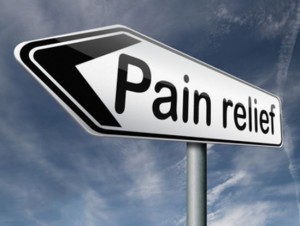
June 5th, 2017 by Dr. Val Jones in Health Tips, Opinion
Tags: Best Locum Tenens, gig economy, healthcare workforce, Largest Locum Tenens, Locum Tenens, Locum Tenens Ratings, Quality Locum Tenens, Traveling Physician
4 Comments »
 I receive a significant amount of email in response to my blog posts about locum tenens work. Curious colleagues (from surgeons to internists and emergency medicine physicians) ask for insider insight into this “mysterious business” of being a part-time or traveling physician. I am always happy to respond individually, but suddenly realized that I should probably post these conversations on my blog so that all can benefit.
I receive a significant amount of email in response to my blog posts about locum tenens work. Curious colleagues (from surgeons to internists and emergency medicine physicians) ask for insider insight into this “mysterious business” of being a part-time or traveling physician. I am always happy to respond individually, but suddenly realized that I should probably post these conversations on my blog so that all can benefit.
The most common question I receive is: How do the agencies compare with one another? Followed closely by: Where should I start? There is no online rating system for this industry, and so grade-focused physicians (taught to value performance ratings) feel at a loss as to where to begin. One day I hope we’ll have a locum tenens quality website, but for now I can offer you my N=1, “case study” experience.
I’ve been doing hospital-based, locum tenens work for 6 years in the field of inpatient rehabilitation medicine. I have accepted 14 assignments through the following agencies:
CompHealth, Weatherby Healthcare, Jackson & Coker, Medical Doctor Associates, LocumTenens.com, and All Star Recruiting
I have had extensive conversations with recruiters at the following agencies, but have not ended up taking an assignment through them:
Staff Care, Delta, Onyx, Barton Associates, and Farr Health
I have summarized my experiences in this table:
| Agency Name |
Number of Assignments |
Quality of Client (Hospital or Employer) |
Quality of Recruiter(s) |
Salary Provided (percent of what I would consider standard) |
| Comp Health |
4 |
B,B,C,C |
A |
80-100% |
| Weatherby Healthcare |
3 |
A,B,C |
A |
85-100% |
| Jackson & Coker |
3 |
A,C,D |
C |
85% |
| Medical Doctor Associates* |
1 |
A+ |
A |
100% |
| LocumTenens.com* |
2 |
A,D |
B |
50-100% |
| All Star Recruiting* |
1 |
B- |
A |
150% |
| Self-Negotiated |
3 |
A,B,D |
N/A |
175% |
*These agencies use VMS systems.
These “data” are highly subjective, of course, but there are a few important points to be gleaned:
- Bad clients are hard to avoid. When I give a client a “D” rating, that means a hospital or employer that is so bad, you have concerns for your medical license or don’t feel ethically comfortable with what they are asking you to do. These are nightmare assignments and must be carefully avoided. I describe my experience with one of the “D’s” here. Big name agencies (and even I on my own) can be duped into accepting bad apple clients. Since it’s hard to know which ones are truly bad (even after a phone interview), I now only commit to a short (about 2 week) initial assignment and then extend once I feel comfortable with the match.
- There are good recruiters everywhere. Although the larger agencies pride themselves in outstanding customer service, the truth is that I have had great relationships with most recruiters at most agencies. From a physician perspective, the “customer experience” is fairly uniform.
- Vendor Management Systems (VMS) don’t create the race to the bottom I expected. The largest agencies are strongly against automated physician-client matching software (which is essentially what VMS does) and argue that they destroy the customer service experience for both hospitals and physicians. Although I am philosophically opposed to being listed on a hospital purchase order along with IV tubing and non-latex gloves, the truth is that such matching has brought me higher-paying assignments at good quality hospitals that do not hire locum tenens physicians outside of a VMS system. I see no reason to exclude agencies who use VMS, though there is a risk of being in a larger competitive pool for each individual assignment. This means that you may waste some time before being placed, but in the end if the pay is $150% of base, then its probably worth it.
- Boutique is not better in the locum tenens world. Unless you are in a specialty that is so small you require recruiters who can perform highly customized job matches, boutique agencies can be home to some of the most depressing assignments in America. Desperate clients who have not had success in filling positions through the (highly motivated) big agencies will turn to boutique ones, hoping that their sheer force of personality will cover for the flaws that make their hospital’s hiring difficult. I have learned to steer clear of the boutique charm offensive.
- You can make a higher salary if you find your own job. Agencies provide significant value to physicians. They do the hard work of locating and updating job assignments, assisting with credentialing and licensing paperwork, negotiating salary and overtime, providing professional liability insurance, and handling logistics (travel/lodging booking and re-booking). That being said, if you’re willing to do all that yourself, you can negotiate a much higher salary if you work directly with hospital HR.
- Will “gig economics” eventually bypass the current agency model? Online job-matching sites will probably take a big chunk of market share, but won’t “own” the space because they don’t provide the logistical, legal, and credentialing services that physicians enjoy from agencies. However, given that agency fees add about 40% costs to physician hiring, there is strong motivation to find alternative hiring strategies, and I suspect that Millennial physicians won’t mind doing extra work for higher pay. Websites like Nomad Health are suffering from limited user sign up (both on the client and worker side), but will likely reach a tipping point when a VC firm provides the marketing capital to raise sufficient awareness of the new hiring marketplace that bypasses recruiters and saves hospitals money. Until then, dipping your toes into the healthcare gig economy is easiest to do through an agency – and the big ones (CompHealth and their subsidiary Weatherby Healthcare have about 50% of the market share, followed by Jackson & Coker as the next largest) provide the largest number of options.
The bottom line is that part-time and short term physician assignments can prevent physician burnout and overwork. The pay is generally very good, and agencies can make the experience as painless as possible. Those who desire higher hourly rates can achieve them if they’re willing to take on more responsibility for paperwork and logistics. Whether this “do it yourself” movement is enhanced by online marketplaces, or good old fashioned cold-calling to find work – physicians hold the cards in this high demand sector. I suspect that more of us will be ready to play our cards in the locum tenens space in the upcoming years, because full time medical work (at the current pace) is, quite ironically, simply not healthy.
April 5th, 2017 by Dr. Val Jones in Health Tips, Opinion
Tags: Cancer Rehab, Oncology, Physiatry, PM&R, Rehabilitating From Cancer, Rehabilitation Medicine
1 Comment »
This blog post first appeared at: Curious Dr. George
 Rehabilitation medicine is one of the best-kept secrets in healthcare. Although the specialty is as old as America’s Civil War, few people are familiar with its history and purpose. Born out of compassion for wounded soldiers in desperate need of societal re-entry and meaningful employment, “physical reconstruction” programs were developed to provide everything from adaptive equipment to family training, labor alternatives and psychological support for veterans.
Rehabilitation medicine is one of the best-kept secrets in healthcare. Although the specialty is as old as America’s Civil War, few people are familiar with its history and purpose. Born out of compassion for wounded soldiers in desperate need of societal re-entry and meaningful employment, “physical reconstruction” programs were developed to provide everything from adaptive equipment to family training, labor alternatives and psychological support for veterans.
Physical medicine and rehabilitation (PM&R) then expanded to meet the needs of those injured in World Wars I & II, followed closely by children disabled by the polio epidemic. In time, people recognized that a broad swath of diseases and traumatic injuries required focused medical and physical therapy to achieve optimal long term function. Today, cancer patients frequently benefit from comprehensive rehabilitation as they recover from the effects of chemo (neuropathy, weakness, and cognitive impairments), radiation (scarring and range of motion limitations), surgery (flaps, plastics procedures, tumor resection, amputations), and brain injuries (edema, debulking, gamma knife and neurosurgery).
Rehabilitation is a phase of recovery occurring after any major life-changing medical or surgical event. Our bodies are designed to regenerate and repair, though optimizing this process takes skilled guidance. PM&R physicians (also known as physiatrists) are trained to use physical modalities (stretching, strengthening, heat, cold, etc.) to mechanically enhance healing. They prescribe medications to manage pain, spasticity, nerve injury, and cognitive impairments, while also leveraging the power of physical therapy to increase cardiopulmonary fitness, muscle strength and flexibility. PM&R physicians are also experts in neurologic injury, and can adapt exercises to coax spinal cord, brain and peripheral nerve injuries to construct new pathways for movement and repair.
Inpatient rehab’s prime directive is to get patients back home. To succeed at home, patients need to be able to function as independently as possible, using trained assistants for managing the activities that cannot be performed without help. Admission to a rehab hospital or unit offers the patient home practice opportunities – with simulated challenges that can include everything from terrain parks, test kitchens, medication management trials, driving simulators, balance tests, electric wheelchairs and even exoskeletons that allow paralyzed patients to walk again. It is like a robotic Disney World, with endless aquatic and equipment possibilities for restoring movement and independence.
When I discuss admission to inpatient rehab with my cancer patients, I ask them about their goals, motivation, and energy levels. Timing of rehab is important, because it must dovetail with treatment, so that the physical exertion strengthens, not saps, the patient. Often times when a person is newly diagnosed with cancer, they want “everything done” – intensive chemo/radiation/surgery as well as rehab/exercise. But staggering these interventions can be more effective.
In other cases when care is palliative, learning new skills and being fitted with battery or electric-powered equipment can mean the difference between living at home or in an assisted environment. Some successful cancer patients come to inpatient rehab to practice managing their activities of daily living with varied amounts of assistance, preparing for increased needs as time goes on so they can enjoy being at home for as long as possible.
For the physiatrist, cancer is a cause of impairments that can be overcome with creativity and practice, no matter the long-term prognosis. Adaptive equipment, physical exercise, and cognitive retraining may be applied intensively (3 hours a day in the inpatient setting), or at a slower outpatient pace, depending on individual need. Rehab physicians desire to support and sustain patient function at the highest level, and “add life to years.” As such, rehabilitation should be considered an integral part of successful cancer care and management.
May 31st, 2016 by Dr. Val Jones in Health Tips
Tags: Barton, Comp Health, Jackson and Coker, Locum Tenens, Tips For Success, Traveling Physician
3 Comments »
 *This post was initially published on the Barton Blog.
*This post was initially published on the Barton Blog.
I have been working locum tenens assignments for over five years, and I’m enjoying it even more now than I did in the beginning. This is probably because experience has taught me how to handle the variety of challenges and unknowns that are a part of the job. Excelling in these environments leads to more assignment opportunities, meaningful professional relationships, and repeat business. If you’re interested in honing your locums skills, here’s how to do it:
1. Be prepared
Before traveling to your assignment, prepare a clipboard that will contain all the key information you will need while on assignment. This should include:
- Your state license number, DEA number, and NPI number
- Your login and passwords (you may receive them in advance or on day one of your assignment).
- Common CPT and ICD-10 codes
- A blank org chart that you can fill in with names of your supervisor and other key personnel. (E.g. Chief of Staff, Nursing supervisor, Medical Records, Admissions Coordinator, Risk Management, etc.)
- Frequently called phone numbers (e.g. pharmacy, lab, hospitalist service, etc.)
You can do this with a tablet or smartphone if you prefer, but I find that most hospitals still prepare paper handouts for me during orientation – so an “old school” clipboard works well.
2. Dress professionally
They say you never get a second chance to make a good first impression. I find that scrubs and a white coat are clean, professional, and easy to travel with. It’s hard to know what the dress style will be at your assignment, but no one complains about a doctor in scrubs and a white coat. Scrubs are comfortable, and coats have plenty of pocket space for equipment. If you feel more comfortable in dress shirts and slacks, that’s fine too. Just remember that you may have long days and be on your feet for many hours, so plan accordingly. Footwear can make or break you!
3. Be tech savvy
It’s difficult to acclimate to new hospital documentation processes, but do your best to do so quickly and without complaining. You may not like the EMR at your assignment, but it’s not going to change, so you may as well dig in and figure out how to make it work for you. Do your EMR training in advance if possible. Plan to be able to compose your documentation on day one. Standing out as a locums often hinges on your ability to adapt to technology quickly.
4. Work hard
Although many locum assignments are short term, it’s still important to work just as hard as if it were a permanent position. Plan to carry the same census as your peers and work about the same hours. You will certainly stand out if you show that you are pulling your weight and are a valuable member of the team. Schedule assignments with facilities in advance and don’t cancel them within a 30-day window.
5. Document thoroughly
If you want to be invited back repeatedly to a facility, make sure you document thoroughly and accurately so that they can bill for your services. Provide them with CPT codes on a daily basis, and make sure you have signed all your charting. If you are off site and medical records call you to complete some documentation, do so quickly and without complaint. They will be grateful!
6. Develop staff rapport
It’s important to treat everyone with respect. Attend team meetings. Listen well. Avoid the attitude of “I don’t need to learn about this because I’m only here for a short time.” People will remember your attentiveness. Offer your cell phone number to the staff so they can get in touch with you at all times.
7. Be humble
When providers first arrive at an assignment, the natural tendency is to want to change everything to suit their own way of doing things. Resist that urge, and try to adapt to the way things are run. Every facility has its own personality and has developed a working routine. Observe it carefully before making suggestions for changing it. If you see someone doing a good job, be sure to praise them for it.
8. Be clean
Keep a tidy office space. Don’t clutter up common areas, leave old food in the staff fridge, or leave private patient information lying around. You don’t want a facility’s last memory of you to be the rotten egg salad with your name on it!
9. Have a sense of humor
When you’re the new guy/gal you’re bound to make mistakes, forget names, get lost, miss meetings, etc. Instead of being frustrated, just take it in stride and laugh at yourself and the situation. Apologize often, learn from your mistakes, and thank staff for helping you to stay on track.
10. Provide excellent patient care
In the end, the most important thing is that patients get good care. Be thorough, evidence-based, and compassionate. Engage in patient and staff education, citing medical literature as appropriate. Listen to your patients, and engage their families in their care.
If you keep these 10 tips in mind as you prepare for your next locums assignment, I have no doubt that you’ll stand out as the kind of provider everyone wants around!
October 20th, 2015 by Dr. Val Jones in Health Tips, Opinion
Tags: Acetaminophen, How To Treat Pain, Ibuprofen, OTC, OTC Pain Medicines, Pain Medicine, Personalized Medicine, Side Effects, Which Pain Medicine Is Best
1 Comment »
 Most of my patients think about pain medicines in terms of the symptoms they treat. “This is my headache medicine, and this is my arthritis medicine,” they often say. Healthcare providers are more likely to categorize pain medicines by the way they work: some are anti-inflammatory, some affect nerve endings, and others influence how the brain perceives pain. But the truth is that no matter how you classify pain medicines, there is no way to know if they’ll help until you try them for yourself.
Most of my patients think about pain medicines in terms of the symptoms they treat. “This is my headache medicine, and this is my arthritis medicine,” they often say. Healthcare providers are more likely to categorize pain medicines by the way they work: some are anti-inflammatory, some affect nerve endings, and others influence how the brain perceives pain. But the truth is that no matter how you classify pain medicines, there is no way to know if they’ll help until you try them for yourself.
Most people don’t realize that pain management is personal. Research is beginning to help us understand why people respond to medicines so differently, and one day we will probably be able to personalize treatment plans more successfully. For now, there are several known genetic reasons why pain medicines are more or less effective for one individual over another. Genes affect:
-
The number of enzymes that break down medicines and remove them from the body. Some people have larger numbers of these enzymes and therefore require more drug to feel its pain-relieving effects. Others may be strongly affected by even small doses of drug.
-
Pain medicine receptor variations can make one medicine effective and another (nearly identical medicine) ineffective in relieving pain.
-
Differences in carrier molecules that transport pain medicine across the blood stream and into the cells that are triggering pain sensations. Some people have fewer carrier molecules to bring the medicine to the site of pain.
-
The number of “middle man” neurotransmitter molecules that pass along the pain response. Too many of these molecules can reduce drug binding and mute the pain relief effects of some drugs.
When pain is severe, prescription medications may be necessary. However, mild to moderate pain may be effectively managed with over-the-counter (OTC) medicines. I believe in the start low, go slow approach to finding the smallest effective dose of pain medicines. I always recommend that my patients read and follow all the instructions on the Drug Facts labels to make sure that they don’t accidentally overdose on active ingredients.
When I choose a pain reliever with my patients, the first thing I think about is potential side effects. Some medicines (such as non-steroidal anti-inflammatory drugs like ibuprofen and naproxen sodium) can be hard on the stomach lining, or cause bleeding in people who are at risk for it. Other medicines (such as acetaminophen) can harm the liver if used in excess, while prescription pain medicines can cause constipation and drowsiness. The best pain medicine to start with is one that is least likely to cause harm to the specific person.
The next thing I ask is whether or not the medicine has worked for the patient in the past. Previous experience is one of the best indicators of future success. Since I know that my patient has a unique, genetically determined number of enzymes, transporters, and receptors, previous experience with pain medicines will give me a good idea of how well they will tolerate it again, and if it will be effective.
Finally, I consider the type of pain that they are experiencing. If the pain is caused by inflammation (from an injury, surgery, or arthritis) I’ll consider a medicine with primarily anti-inflammatory properties. If the pain is caused by tension (such has headache) or complicated by fever, I may consider acetaminophen first. If the pain is coming from a nerve (such as sciatica or neuropathy) then I’ll use pain medicines that work for nerve pain specifically. If the pain is complicated by depression, I may discuss additional medicines and approaches.
Sometimes, combinations of medicines are significantly more effective than one medicine alone at treating pain (this is why some prescription pain relievers are combinations of an opioid and acetaminophen). When using more than one pain relief medicine, it is important to compare active ingredients in both prescription medications and OTC products to make sure that accidental overdoses do not occur. I also recommend consulting with a healthcare professional if there are concerns about drug interactions or if the patient is already on a significant number of prescription medications that could interact with his or her OTC pain medicine choices.
The bottom line is that science is still catching up to pain management. Perhaps one day a simple blood test will help us to determine the very best pain medicine regimen for a specific patient at a given time. But until then, adopting a strategy of careful trial and error (avoiding unwanted side effects, using the lowest effective doses, and consulting a physician when pain is severe) is the only option. Don’t worry too much about whether a specific medicine is “best” for your pain. Pain management is very personal, so you will need to discover your own best solution.
***
Disclosure: Dr. Val Jones is a paid consultant for McNeil Consumer Healthcare Division.
September 9th, 2015 by Dr. Val Jones in Health Tips, True Stories
Tags: ARU, Autism, Brain Injury, Family Input, Inpatient Rehabilitation, IRF, Mental Status Changes, Rehabilitation, Stroke
1 Comment »

Photo Cred: Max S. Gerber
I learned a valuable lesson recently about how difficult it can be to make the correct diagnosis when you see a patient for a very short period of time. In the acute rehab setting I admit patients who are recovering from severe, life-altering brain events such as strokes, head injuries, and complex medical illnesses. It is challenging to know what these patients’ usual mental function was prior to their injuries, and so I rely on my knowledge of neuroanatomy, infectious disease, and pharmacology to guide my work up. However, I have learned that asking the patient’s family members about what they were like (in their healthier state) is extremely important as well. Personality quirks, likes and dislikes, and psychiatric history all offer clues to ongoing behavioral challenges and mental status changes.
This fact was never clearer than when I met an elderly gentleman with a new stroke. He was extremely drowsy, non-participatory, and was not oriented to anything but his name. The stroke had occurred in a part of the brain that does not affect cognition, so I began to wonder if he had an infection or was having a reaction to a medication. I carefully ruled out all possible sources of infection, and I combed through his medication list and removed any potentially sedating drugs. His mental status remained unchanged for several days. I then began to wonder if perhaps he was suffering from significant dementia at baseline, and that he was living at home with more help from his family than they had initially reported. The therapy team and I began to consider a transfer to a nursing home. The family was horrified by the idea.
As it turned out, his grandson shared with me that he believed that the patient was autistic. Because his grandpa was elderly, he grew up in a time where not much was known about autism, and diagnoses of the condition was rarely made. He was therefore never formally diagnosed, but had many of the textbook characteristics. His stroke, combined with a sudden transfer to an inpatient hospital setting, was very distressing for the patient, and he had shut down to protect himself from the mental anguish. The “dementia-like” behavior that we were witnessing was merely an acute psychological reaction.
Armed with this new information, the therapy team requested family members to be present during all sessions – to encourage participation and to provide comfort and normalization of the transition from home to hospital. The patient responded beautifully, and made remarkable gains in his ability to walk and participate in self care activities.
I apologized profusely to the family for our period of confusion about his diagnosis and care needs, and offered reassurance that we would do our very best to help him recover from his stroke so that he could go home directly from the hospital. He did in fact return home, and with a little extra help from his daughters, he is enjoying his usual projects and activities.
As for me, I will never presume dementia without careful family confirmation again.
 I receive a significant amount of email in response to my blog posts about locum tenens work. Curious colleagues (from surgeons to internists and emergency medicine physicians) ask for insider insight into this “mysterious business” of being a part-time or traveling physician. I am always happy to respond individually, but suddenly realized that I should probably post these conversations on my blog so that all can benefit.
I receive a significant amount of email in response to my blog posts about locum tenens work. Curious colleagues (from surgeons to internists and emergency medicine physicians) ask for insider insight into this “mysterious business” of being a part-time or traveling physician. I am always happy to respond individually, but suddenly realized that I should probably post these conversations on my blog so that all can benefit.


 Rehabilitation medicine is one of the best-kept secrets in healthcare. Although the specialty is as old as America’s Civil War, few people are familiar with its history and purpose. Born out of compassion for wounded soldiers in desperate need of societal re-entry and meaningful employment, “physical reconstruction” programs were developed to provide everything from adaptive equipment to family training, labor alternatives and psychological support for veterans.
Rehabilitation medicine is one of the best-kept secrets in healthcare. Although the specialty is as old as America’s Civil War, few people are familiar with its history and purpose. Born out of compassion for wounded soldiers in desperate need of societal re-entry and meaningful employment, “physical reconstruction” programs were developed to provide everything from adaptive equipment to family training, labor alternatives and psychological support for veterans.
 Most of my patients think about pain medicines in terms of the symptoms they treat. “This is my headache medicine, and this is my arthritis medicine,” they often say. Healthcare providers are more likely to categorize pain medicines by the way they work: some are anti-inflammatory, some affect nerve endings, and others influence how the brain perceives pain. But the truth is that no matter how you classify pain medicines, there is no way to know if they’ll help until you try them for yourself.
Most of my patients think about pain medicines in terms of the symptoms they treat. “This is my headache medicine, and this is my arthritis medicine,” they often say. Healthcare providers are more likely to categorize pain medicines by the way they work: some are anti-inflammatory, some affect nerve endings, and others influence how the brain perceives pain. But the truth is that no matter how you classify pain medicines, there is no way to know if they’ll help until you try them for yourself.








